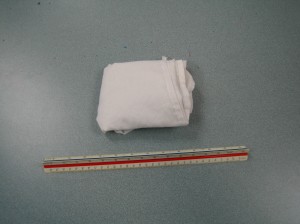
Saskatoon First Aid offers the largest volume of standard first aid training courses for the lowest rates in Saskatchewan. Trainees can enrol in comprehensive two day courses, half day stand-alone CPR classes, private classes, and re-certification courses. For your convenience these courses are held throughout the week, including evenings and weekends. Several certification and CPR options are also available depending on the trainees needs.
A complete list of available classes can be found here on the Saskatoon First Aid website. Rates, schedules, and registration forms can also be found through the link. Trainees are likewise encouraged to complete their registration through e-mail, telephone call, and walk-ins during business hours in any of the training centers.
Available courses

Cardiopulmonary resuscitation (CPR), automated external defibrillation (AED), standard first aid, food safety training courses are offered at Saskatoon First Aid. Trainees can enrol in first aid and CPR combined courses which take 18 hours to complete. CPR training is available in three levels (A, C and HCP), each level corresponding to a particular St Mark James certificate. All CPR levels include AED training; AEDs are machines that are able to detect heart rhythms and apply needed shock to restart the heart. AED’s provide instructions and dramatically increase chances of survival for victims of serious cardiac emergencies.
Training classes are focused on knowledge and skill training, with trainees learning how to recognize and react to different emergency situations and injuries. Lessons on bandaging, wound care, broken bones, fall injuries, and many more are tackled in standard first aid training classes.
Private Standard First Aid Courses in Saskatoon
Private courses are also available to big groups and companies who request separate training classes and schedules. Large groups are more affordable and can be held at the Saskatoon First Aid training centre. A workplace approved instructor can come to your training facility if minimum space requirements are met.
More about Saskatoon First Aid
- St Mark James certificates valid for three years throughout Canada are awarded to trainees who are able to complete and pass a training course. The certificate will be able to meet whatever purpose the trainee requires.
- Expiring certificates can be renewed through refresher courses offered twice a week at Saskatoon First Aid.
- All classes are offered at the cheapest course rates in the area. Rates include taxes, certificates, St Mark James registration fees, and training manuals and equipment.
- Should a trainee drop out of the training course, he or she is entitled to full refund, provided a 72-hour notice was given beforehand.
- All classes are taught by workplace approved St Mark James certified instructors.
- Saskatoon First Aid has several training centers throughout Saskatoon. Classrooms are well-maintained and spacious, complete with the latest training equipment for first aid, CPR, and AED.
Did You Know?
CPR for children over 1
Cardiopulmonary resuscitation (CPR) uses chest compressions to maintain circulation of blood in the body when the heart stops. Automated external defibrillation (AED) is done when the heart is beating irregularly to get heart rhythm back to normal. CPR for adults is pretty straightforward, just 100 – 120 compressions per minute, with the compression depth at 2 inches. CPR for children older than 12 months of age is modified slightly.
- Place the heel of your hand on the center of the child’s chest and press down 1/3 of the depth of the child’s torso. Repeat for 30 compressions, waiting for the chest to recoil each time.
- Open child’s airway by tilting the head back and pulling the chin down.
- Remove any obstructions that can get lodged in the throat.
- Pinch the nose and seal your mouth over the child’s.
- Give a breath and watch if the chest rises.
- Repeat compression and ventilation with a ratio of 30:2